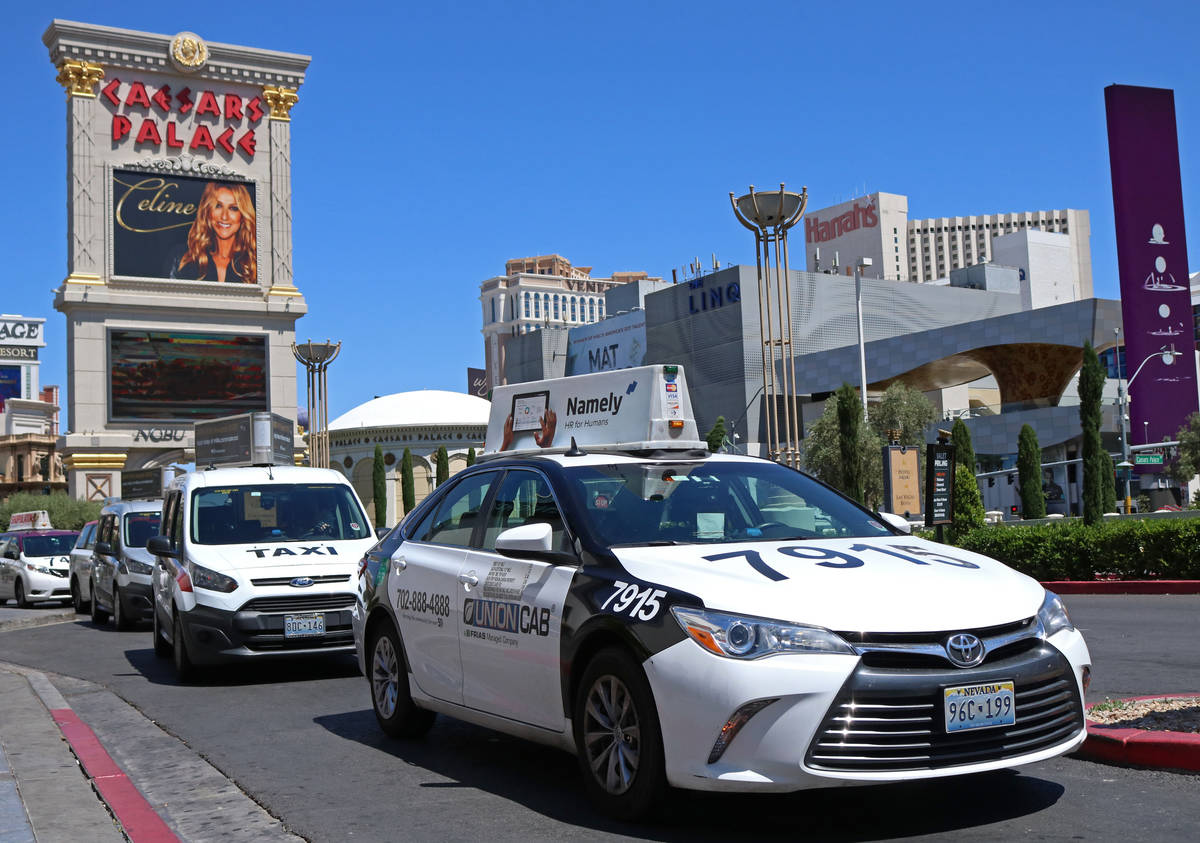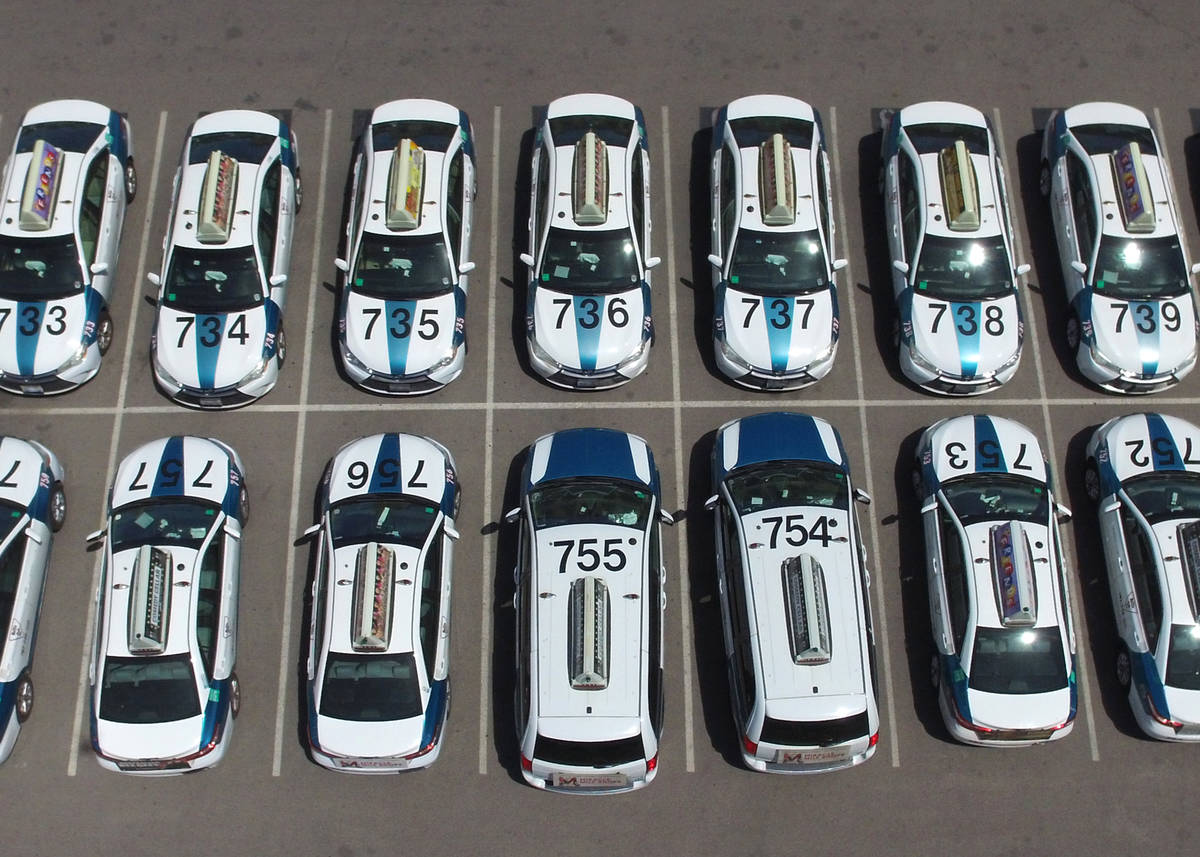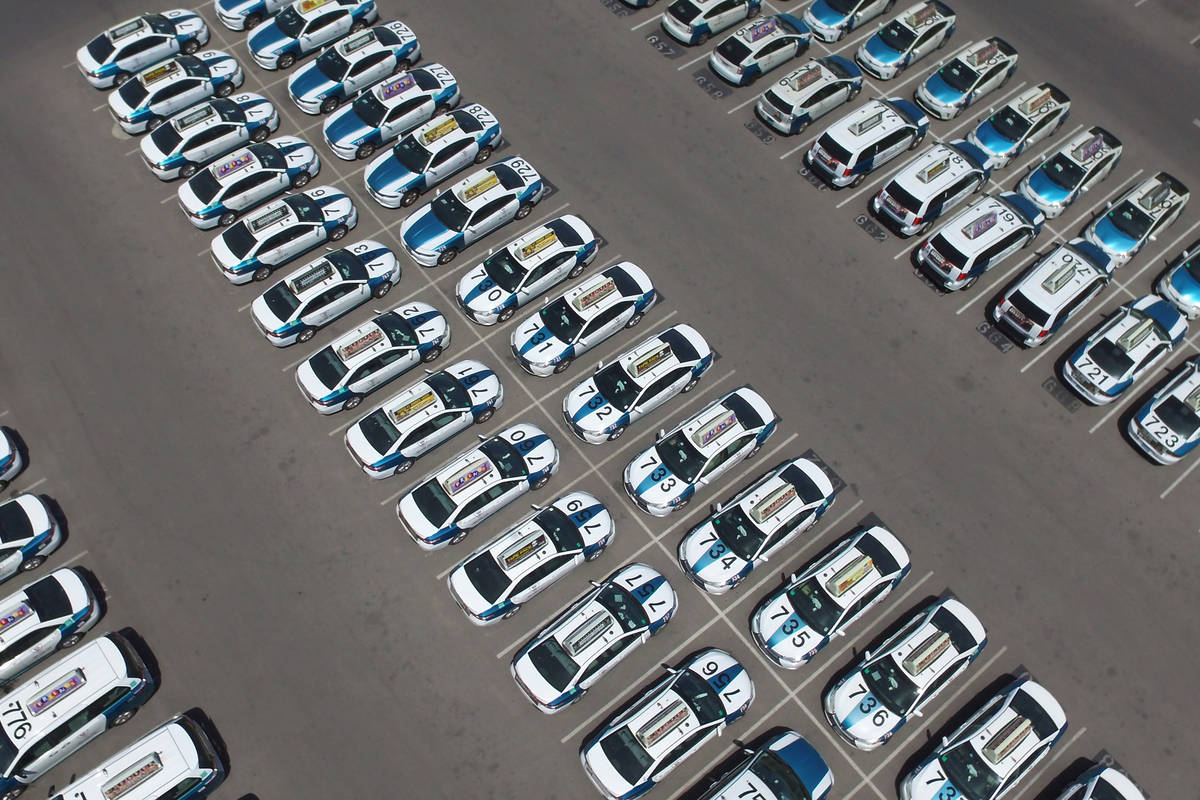Taxi trips in Las Vegas down 97 percent since February
Taxicab demand in Las Vegas has steeply decreased since the resort corridor was shut down by the coronavirus.
Taxi ridership in the Las Vegas Valley fell by 97 percent from February to April, according to Taxicab Authority data.
In February, Southern Nevada saw 1.1 million trips provided by 16 taxicab companies in the area. That dropped to 28,736 in April when all major resorts on Las Vegas Boulevard and nonessential businesses across the valley were closed for the entire month.
The effects of the coronavirus could be seen in March too, as ridership declined by 55 percent compared with February, dipping to 499,926 trips, as the initial stay-at-home recommendations were announced March 17.
Ten of the 16 cab brands are providing service while the remaining six have voluntarily and temporarily suspended operations, according to the Taxicab Authority. Seven of the 10 brands operate under the YCS & Newcab umbrella, while Desert Cab, Western Cab and Lucky Cab are the other three operating.
“In spite of the deep decline in monthly trips, taxi drivers continue to provide hundreds of critically important rides to passengers going to grocery stores, pharmacies and medical appointments throughout the valley every single day,” Taxicab Authority Administrator Scott Whittemore said. “Taxi service remains available to elderly passengers and regular customers through ride-hailing apps and easy-to-use online ordering platforms.”
In comparison, the only trackable ridership statistic for ride-hailing companies such as Uber and Lyft comes from McCarran International Airport, as the Transportation Authority doesn’t require those companies to file monthly reports.
McCarran’s numbers show ride-hailing drop-offs at the airport were down 97 percent in April compared with a year ago, going from 361,001 drop-offs in April 2019 to 10,363 last month.
YCS & New Cab director Johnathan Schwartz said the industry has never seen anything like what the coronavirus pandemic has caused. Schwartz said he has had to furlough most of the company’s 1,800 drivers, with less than 50 on valley roads on a given day.
“No one accounts for their business revenue almost going to zero,” Schwartz said. “We’ve unfortunately had to furlough most of our drivers until there’s some sort of resumption in business. There’s almost no traffic on the Strip and almost no traffic in and out of McCarran.”
The Taxicab Authority has communicated protocols and directives for cab operators to follow, including the requirement to disinfect high-touch surfaces after every transport, thorough cleaning after every shift and wearing a face covering during passenger transportation.
“When our city reopens as the world’s premier tourist destination, our commitment is that the Las Vegas cab industry will be among the safest transportation options available,” Whittemore said.
With no real directive about when casino properties will be able to come back online and what limitations will be instituted early on, Schwartz said he’s paying careful attention to what the resort corridor is doing to ensure his brands are ready to go at appropriate levels when the time comes.
“It’s going to be based on demand,” Schwartz said. “We’re going to bring back people slowly as demand requires it. There’s no way to know until we start to see numbers. A lot of it is going to be gauged in part to reservations at casinos. We’re watching that very, very closely. Any data we can obtain, we’re trying to use for staffing purposes.”
It’s tough to know the lasting impact the dip in visitors will have on the cab industry, but with ridership counts already being affected by the emergence of ride-hailing services, it is likely going to be a struggle, Schwartz said.
“This is a battle for survival by everybody,” Schwartz said. “If business doesn’t come back quickly, we’re all going to be in a battle for survival.”
Contact Mick Akers at makers@reviewjournal.com or 702-387-2920. Follow @mickakers on Twitter.














































